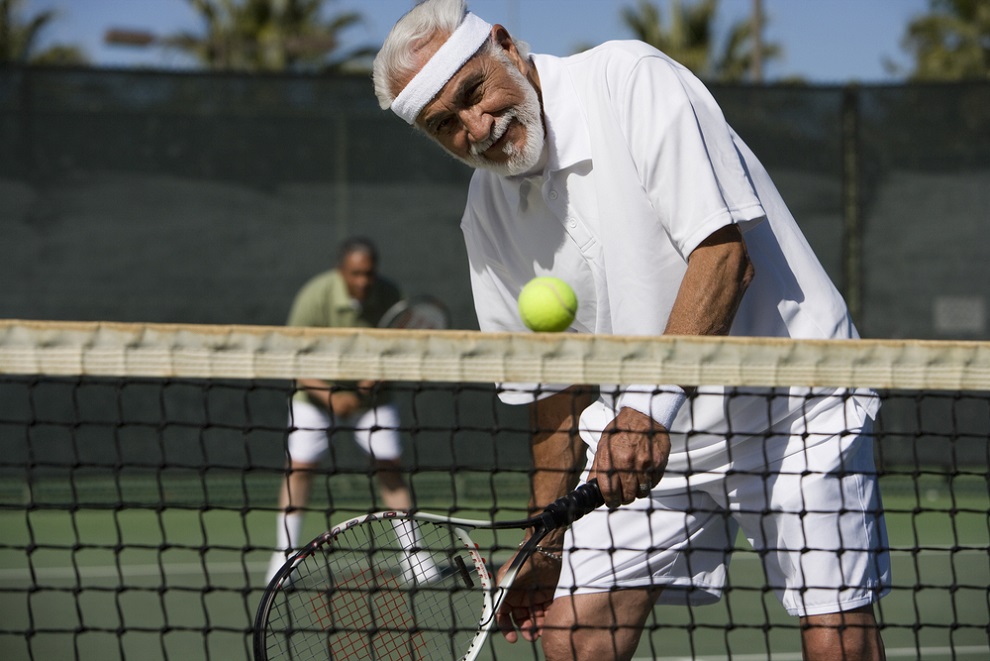Testosterone levels in men decline gradually around age 30, with about a 1% drop each year. At first, the effects may be subtle, with less energy, trouble building muscle, or a dip in libido.
However, over time, the impact becomes harder to ignore. A meta-analysis found that men with higher testosterone levels had a lower risk of developing type 2 diabetes. The findings suggest a reverse-causality scenario. This means that low testosterone doesn't just correlate with metabolic issues; it also contributes to them.
This makes testosterone a more central piece in men's long-term health than many realize. Testosterone influences much more than muscle and mood. It supports bone strength, sex drive, and insulin sensitivity. So, when levels drop, it can affect nearly every system in the body.
While testosterone therapy is one option, the risks and long-term effects of hormone replacement make some men hesitant. As a result, there's growing interest in natural approaches, especially progressive resistance training. Strength-based workouts are gaining attention for physical fitness and their potential to support growth and hormonal balance.
This blog explores the question: Does resistance training increase testosterone naturally, and how does it compare to other solutions?

What Does Low Testosterone Mean?
Low testosterone, also known as hypogonadism, happens when the body produces less testosterone than it needs for normal function.
According to the American Urological Association, total testosterone levels below 300 ng/dL fall into this category. It's something that tends to show up more with age, but lately, younger men are experiencing it too. Stressful jobs, late nights, poor food choices, and sitting too much at work in tandem cause low T.
Testosterone plays a role in various bodily functions. When levels drop, the effects show up in multiple areas. Physically, men notice a decline in muscle mass, increased body fat, or even a loss of bone density. Osteoporosis, though often associated with women, can become a real concern for men with low testosterone.
Additionally, the psychological impact can be just as disruptive. Mentally, low testosterone can cause men to experience brain fog, depressed mood, or just not feeling like themselves. You may get frustrated more easily or find your motivation dipping.
Sexual health is another area where low testosterone makes itself known. Many men experience a drop in libido. Others may face issues like erectile dysfunction that weren't present before. The causes behind this hormone shift vary. Natural aging is one piece of the puzzle.
However, a sedentary lifestyle, a diet high in processed foods, poor sleep habits, and long-term stress can accelerate the decline. These habits affect the body's ability to produce and regulate hormones effectively.
The good news is that you're not stuck with these symptoms forever. If you've been feeling “off†and can't quite explain it, low testosterone could be part of the picture. From here, changes in how you move, eat, and manage stress can make a difference. And when needed, talking to a doctor can open up even more options.
The Relationship Between Testosterone and Muscle Mass
Testosterone is a key element in muscle growth. It helps your body build muscle by encouraging protein synthesis, producing red blood cells, and speeding up fat metabolism.
Once testosterone binds to androgen receptors in your muscles, it triggers a process that makes it easier to add lean muscle mass. The body works in an anabolic (muscle-building) environment when testosterone levels are in a good range. This makes it easier to gain muscle and recover from workouts. But when testosterone drops, it can feel like progress stalls.
Muscle growth slows down, and recovery time after workouts lengthens. Simply put, low testosterone makes building muscle harder. Interestingly, muscle mass itself can also influence how much testosterone your body produces. The more muscle you have, the more your body is encouraged to make testosterone, creating a positive feedback loop.
Strength training is a great way to activate this process. Weight lifting or resistance training signals the body to release more testosterone, which in turn supports muscle growth.
Can Resistance Training Boost Testosterone?
Resistance training has shown promising results in boosting testosterone levels immediately after every workout and over time. Lifting heavy weights can trigger an acute increase in testosterone levels.
For example, research explains that testosterone promotes muscle growth by stimulating protein synthesis and inhibiting protein degradation. This process is crucial for muscle hypertrophy. During resistance exercise, testosterone interacts with the androgen receptor (AR) in muscle cells, causing increased muscle mass and strength.
In fact, testosterone is considered one of the major promoters of muscle growth in response to endurance training. The same study shows that testosterone secretion generally increases in men after heavy resistance exercise. However, this response is influenced by other factors such as age and biological sex, with young and elderly subjects experiencing a reduced acute testosterone response as they age.
Training frequency plays a vital role in optimizing testosterone production. Aim for 3-4 weekly sessions, each lasting 45 to 60 minutes. This routine helps the body adapt, leading to long-term improvements in testosterone response. While testosterone spikes immediately after a workout, the long-term effects, such as balanced hormones and improved receptor sensitivity, offer the most significant benefits.
The acute results of resistance training include an immediate spike in testosterone levels. However, the long-term benefits are more profound. Regular exercise affects testosterone levels, which in turn supports better hormonal balance. This is due to improved receptor sensitivity and hormonal balance, further boosting muscle mass and strength.
Benefits of Resistance Training for Men with Low T
Resistance training offers myriad benefits for men with low testosterone, improving not just growth hormone levels but also overall health and well-being. Some of them include the following.
Improved Muscle Mass and Strength
One of the immediate benefits of resistance training is improving muscle mass and strength. Men with low testosterone often experience sarcopenia, the gradual loss of muscle mass.
Resistance training helps counter this effect by promoting muscle growth. As muscle mass increases, men often notice significant improvements in their overall physical performance, including increased strength and better endurance. This leads to greater mobility and more ease in performing daily activities.
Fat Loss and Metabolism Boost
Resistance training also aids in fat loss and boosts metabolism. Lower body fat is associated with high t levels, and strength training helps reduce fat, thus improving testosterone production naturally.
Moreover, lifting weights increases insulin sensitivity and metabolic rate, improving body composition and overall health. These changes make it easier for men to maintain a healthy weight and optimize their metabolic function.
Enhanced Mood and Mental Clarity
Another advantage of resistance training is its positive impact on mood and mental clarity. Strength training has been shown to increase the production of dopamine and serotonin while reducing cortisol, the stress hormone.
These hormonal shifts help improve mood and reduce depressive symptoms. Men with low testosterone often report mental clarity, are more focused, and are less stressed after regularly participating in resistance training.
Boosted Libido and Sexual Function
Resistance training can also enhance sexual health. By improving blood flow, it helps with sexual function, potentially boosting libido and overall sexual performance.
Additionally, the confidence gained from increased muscle mass and strength can improve self-esteem, contributing to better sexual health. One study published in the Journal of Sexual Medicine found that resistance training was associated with improvements in erectile function and sexual desire in men with erectile dysfunction (ED).
The research noted that regular strength training can positively influence blood flow and circulation, both of which are crucial for erectile function. Additionally, it was observed that men who engaged in consistent resistance training experienced a reduction in symptoms of erectile dysfunction.
How Resistance Training Compares to Other Low T Treatments
When managing low testosterone, several treatment options are available, each with its own set of advantages and drawbacks. Among these, resistance training stands out due to its comprehensive health benefits.
Testosterone Replacement Therapy (TRT)
TRT is widely known for its effectiveness to increase testosterone levels quickly. Men can experience rapid results from this treatment. However, TRT requires long-term commitment and comes with potential side effects, including a possible impact on fertility.
It's important to consult a specialized provider like Male Excel, which offers tailored TRT therapy to ensure proper monitoring and adjustments. While effective, TRT addresses hormone levels directly but doesn't provide the full range of physical health benefits that resistance training offers.
Supplements and Herbs
Supplements such as Ashwagandha, DHEA, and Zinc may help raise testosterone levels, but research on their effectiveness remains inconsistent. These supplements work best when paired with regular exercise. However, they don't have the same holistic effects as resistance training, which improves muscle mass, metabolism, and overall fitness level.
Lifestyle Modifications
To enhance natural testosterone production, prioritize sleep hygiene, stress management, and a balanced diet. Incorporate regular resistance training as it not only improves sleep, reduces stress, and promotes healthy eating habits. This straightforward approach is highly effective in addressing low testosterone levels.

Best Practices for Resistance Training with Low T
When starting resistance training with low testosterone, it's important to approach the process safely and effectively.
Start Safe and Smart
First, get medical clearance from your doctor to ensure that resistance training is appropriate for you. If you're new to lifting, working with a trainer is a great idea. A trainer can help teach you proper form and minimize the risk of injury.
Workout Structure
Aim for 3-4 workouts each week. A full-body routine or upper/lower split can work well. Focus on progressive overload, meaning you gradually increase your weights or repetitions. Always prioritize good form over lifting heavier weights.
Recovery Is Key
Recovery plays a significant role in your success. Sleep is essential for muscle growth and testosterone production. Be sure to schedule rest days, allowing your muscles time to heal. Stress management and reducing inflammation also support healthy hormone levels.
Consume Necessary Nutrition
You can supplement your training with good nutrition. Consume 1.6-2.2g of protein per kilogram of your body weight. Include healthy fats like avocados, fatty fish, olive oil, and nuts to help with hormone production. Avoid eating processed foods and sugars, which can interfere with your overall health.
When to Consider Additional Help
For some men, resistance training alone may not be enough to address low testosterone levels. If symptoms persist despite regular training for 3 to 6 months, or if lab results continue to show low testosterone, it may be time to explore additional options.
Testosterone Replacement Therapy (TRT) can effectively complement resistance training. While lifting weights boosts testosterone release naturally, TRT can raise levels more quickly, offering immediate relief for those who need it. You can combine them to achieve your fitness level.
Work with an endocrinologist or a men's health specialist when considering TRT. These professionals can monitor your progress, adjust treatment plans, and ensure you achieve the best results. Regular blood work and lifestyle adjustments will help keep track of improvements and identify the most effective approach for long-term health.
Conclusion
Does resistance training increase testosterone? The answer is yes, although it may not fully cure low testosterone, resistance training can significantly boost testosterone levels and reverse many of its effects.
It's a natural and sustainable approach that's easy to maintain. Start small and gradually push yourself harder as you grow stronger. Before diving into training, talk to your doctor. Set a plan that suits your lifestyle and commit to it. Don't forget to track your progress, both physically and emotionally, to see how much you're improving.
If you find that resistance training alone isn't enough, consider combining it with testosterone therapy. Male Excel offers effective solutions for boosting testosterone and supporting your overall health goals.
References
1. Yao, Q., Wang, B., An, X., Zhang, J., & Ding, L. (2018). Testosterone level and risk of type 2 diabetes in men: a systematic review and meta-analysis. Endocrine Connections, 7(1), 220-231. Retrieved Apr 10, 2025, from https://doi.org/10.1530/EC-17-0253
2. Riachy, R., McKinney, K., & Tuvdendorj, D. R. (2020). Various Factors May Modulate the Effect of Exercise on Testosterone Levels in Men. Journal of Functional Morphology and Kinesiology, 5(4), 81. https://doi.org/10.3390/jfmk5040081
3. Gerbild, H., Larsen, C. M., Graugaard, C., & Josefsson, K. A. (2018). Physical activity to improve Erectile function: A Systematic Review of Intervention studies. Sexual Medicine, 6(2), 75-89. https://doi.org/10.1016/j.esxm.2018.02.001





